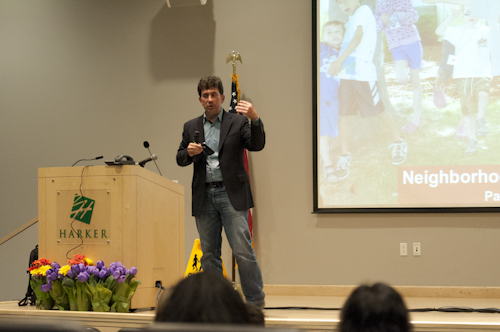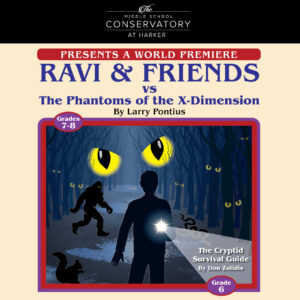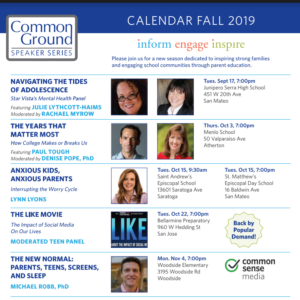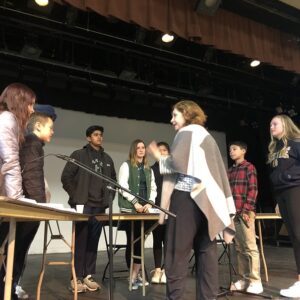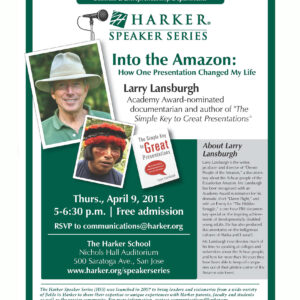Author and neighborhood organizer Mike Lanza spoke at the first Harker Speaker Series event of the year on Sept. 14 to share his insights into how neighborhoods can be great places for children to grow up and lead fun, fulfilling lives.
Beginning with some of the problems currently facing children, Lanza made the point that many kids spend too much time in front of screens, be they television, sets, laptops or tablets. On average, he noted, kids spend about eight hours each day consuming visual media.
Their lives are also highly scheduled, with sporting events, lessons and other activities. “They have no time on their own in the world to do things,” Lanza said.
Lack of unstructured play time leads to several problems, he said, among them obesity, depression and lack of creativity. He added, however, that taking away screen time and sending kids off into their neighborhoods won’t work on its own, because many neighborhoods are “boring.”
To remedy this problem in his Menlo Park neighborhood, Lanza got active and began making changes to his home to make it into a place where neighborhood children could play whenever they wanted. Among the modifications made to his home were a driveway that could be drawn on (it now contains a mural representing different parts of the neighborhood), a picnic table in the front yard, a whiteboard fixed to a fence and a play house where kids have been encouraged to write on the walls.
“We’re defacing everything we can,” Lanza said. “We want this place to look like kids live here. We want them to feel like they own this place.”
He and his family also visited homes throughout the neighborhood and encouraged other families to use the various amenities he had installed, even when no one was home. As a result, children regularly engage with one another in outdoor activities and neighborhood families have come to know one another much better.
Lanza also touched on other examples of American neighborhoods that were transformed to provide their children with meaningful play lives, such as Lyman Place, located in the South Bronx of New York City, normally an area associated with drug problems and high crime rates. In the 1970s, Lyman Place resident Hetty Fox led an effort to designate the area as a traffic-free spot from the morning until the late afternoon during the summer months. For more than 35 years, Fox has helped maintain the neighborhood as a place where kids of all ages can play safely in the street, and hires youth workers as assistants.
Another case study was a spot in Portland, Ore., where an architect had the street in his neighborhood painted with intricate designs and placed installations on every corner, including a clubhouse with toys for kids, a book exchange station and a solar-powered tea stand that is refilled by residents of the neighborhood.
Lanza finished the talk by providing advice to the audience about what they could do to change the atmosphere of their neighborhoods to accommodate kids at play. When moving, he said, parents should think about what’s in their children’s interests besides schools and housing amenities. “Are we really moving for our kids? Do they want this high-pressure school district you’re moving them to? Do they want the extra bedroom?” he asked. “Kids would love to double up in bedrooms if they have a neighborhood that’s thriving, that’s really happening.”
He also urged parents to make a neighborhood hangout, a place where kids could be certain something was happening a good portion of the time. “Kids are not going to go outside if there’ s nothing going on,” he said. “The best way to assure that something’s going on is if there’s a place where people can go where there’s something happening.”
Another important task, he said, is to “make the place you live into a close, communal village, where you know people, where they know you, where they know your kids, where you know their kids. If you can make that into a nice, comfortable place then you’ll comfortable letting your kids go. And other kids will show up at your door because they’re comfortable with you.”
